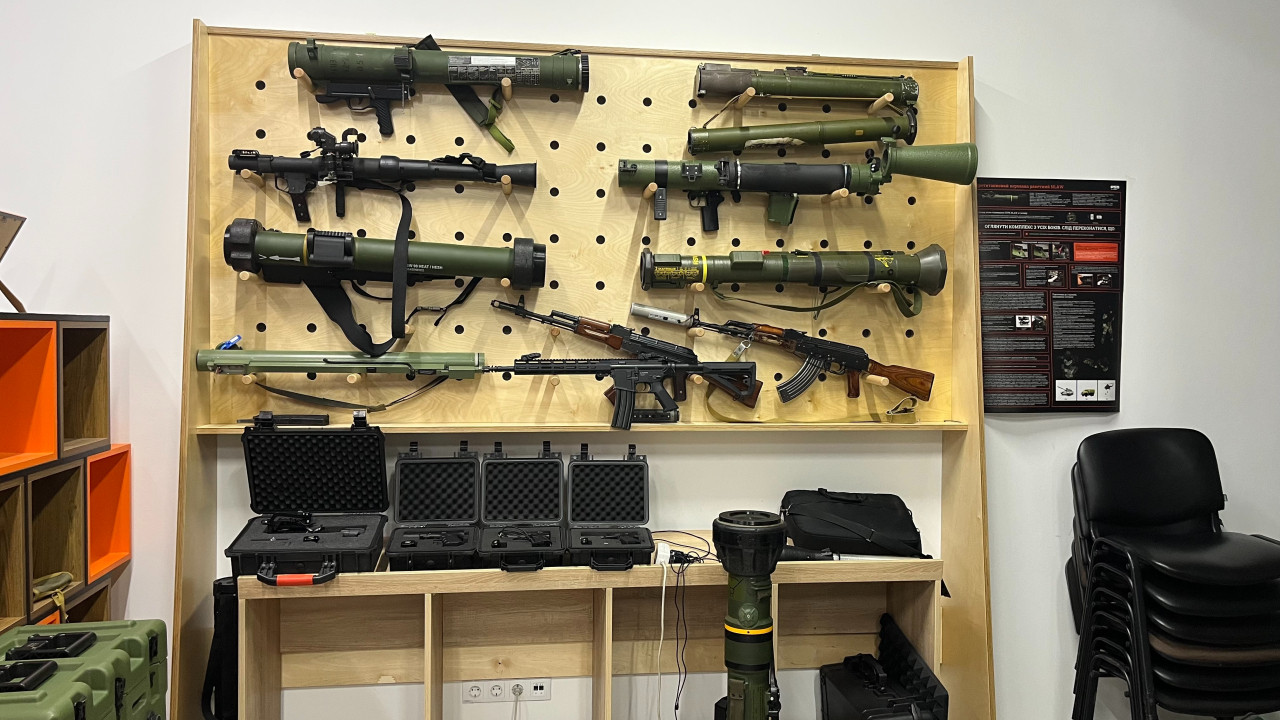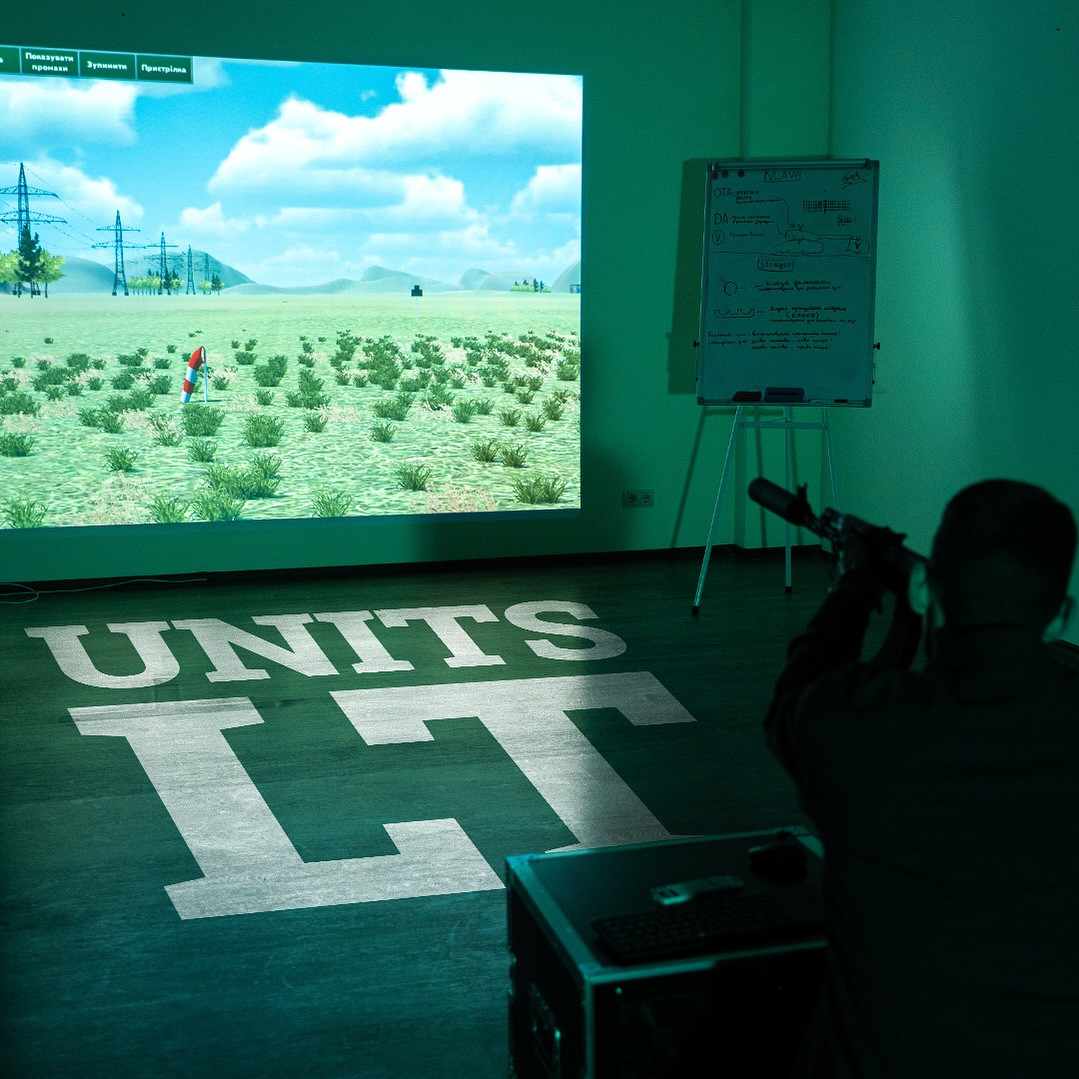Endless ammunition: How Ukrainian trainers are aiding the army in mastering the "zoo" of new weaponry.
This autumn, soldiers from one of the mobile fire groups captured on video the downing of a missile using a Browning M2 machine gun. This event is rare and almost coincidental. For it to happen, the soldiers had to react promptly, aim the machine gun in the right direction, accurately assess the distance and speed of the target, and begin shooting at the missile in advance.
They regularly practice the entire sequence of actions on virtual reality (VR) simulators developed by the Ukrainian company Logics7, which fully mimic the operations of mobile air defense groups and train them to operate in various combat situations.
Over the past three years, hundreds of new weapon systems have appeared in Ukraine, which the defenders are struggling to learn. During the invasion of Kyiv region, to destroy Russian equipment using FIM-92 Stinger and FGM-148 Javelin systems, our troops sometimes had to rely solely on instructions from YouTube.
Currently, several Ukrainian companies are producing trainers and simulators that completely replicate the shape, weight of weapons, and their combat operations. Thanks to these tools, soldiers quickly master the functionality and refine their tactical applications. Instructors can model various combat scenarios, monitor the actions of trainees, and analyze mistakes together with them.
The Commander of the Ground Forces, Mykhailo Drapatiy, has labeled quality training of personnel, particularly ensuring training centers are equipped with quality simulators, as a priority in his reform program. Meanwhile, Taras Chmut, head of the "Come Back Alive" foundation, noted that people are the main "game changers" for Ukraine, and their training is the key focus of the foundation's work in 2025.
Manufacturers of simulators and trainers interviewed by the Economic Pravda indicate that demand for their products has increased several times since 2022. Today, both experienced companies that have operated in this market for decades and relatively new firms from the IT industry produce them.
Lasers, Virtual Mobile Air Defense Groups, and Tank Cabins
Training military personnel with real weapons is essential but costly. The expenses associated with weapon systems, ammunition, logistics on the training ground, target models, personnel, and other infrastructure are high, especially when preparing hundreds of thousands of individuals. Therefore, at least part of the training is being transitioned to modern simulators.
Among the most popular on the market are laser simulators. Several companies manufacture them. How do they work?
A picture of enemy tanks and infantry is projected onto a large white screen. Soldiers must destroy them using mock-ups of firearms or anti-tank weapons that completely replicate the weight, dimensions, targeting systems, safeties, and ballistics of real models.
 7
7The exercise begins with battle setup. The instructor places his units, enemy equipment, sets weather conditions, determines weapon sets, the enemy's attack tactics, and other parameters in the virtual training area.
When fired, the mock-up emits a laser beam. An infrared camera captures the impact point on the screen, and then the computer calculates whether a hit occurred based on shooting tables.
 8
8Training on such simulators can also be conducted in groups. The instructor creates a combat scenario, and the squad leader positions the soldiers and divides responsibilities. The results of the battle then determine how effectively the commander gives orders and whether the soldiers can follow his commands.
The concept behind Logics7 when developing the simulator was to enable its installation at brigade deployment points, not just in training centers deep in the rear. "New reinforcements have arrived, new unfamiliar grenade launchers have come in, and someone needs to refresh their skills after an injury – they go to a small training center in some basement just a few kilometers from the front line and shoot until they're ready," explains Eduard Brazas, training and implementation manager at Logics7.
In the past year, VR simulators for mobile air defense fire groups – those that operate from pick-ups and shoot down missiles and "shaheds" – have gained increasing popularity. Several companies in Ukraine, including Logics7 and U-Force, produce such simulators.
With these, soldiers can refine their skills both individually and as a complete fire group. The commander sits at the computer and issues commands, the spotter highlights the target, the shooter attempts to hit it with a machine gun, and the MANPADS operator finishes it off. This way, the military trains not only for downing targets but also for coordination.
 9
9To hit a target with a machine gun, one must shoot in advance. In training mode, the computer highlights the required shooting zone to help develop the habit, and then the soldier must perform without prompts. The system considers factors such as ballistics, wind speed, atmospheric pressure, barrel heating, the presence of residential buildings, etc.
"Soldiers from mobile groups sometimes come to us to model a situation and analyze mistakes they made at night during a real combat mission," shares Brazas.
Another popular simulator is laser tag. Ukraine used them even before the full-scale war. "Our laser tags are not only for shooting training but also for establishing interaction and tactics. The instructor sees all the statistics, the movements of the soldiers, who hit whom, who shot more effectively, who died. After the battle, they conduct a debriefing," said Sergey Sereda, director of U-Force, to Economic Pravda.
Trainees wear sensors along with their gear that react to laser hits and pick up guns that "shoot" these beams. The simulator's software accounts for the number of rounds in the magazine and the rate of fire. For greater realism, the release of the laser beam can be tied to a blank shot.
Before the battle, soldiers wear special wristbands that deliver an electric shock if hit by the enemy. A shock can also be received for failing to follow safety rules, such as standing behind a grenade launcher during a shot. According to Sereda, the shock is unpleasant, and this way, soldiers develop "conditional reflexes" to preserve their lives.
 0
0The company also produces imitation grenades and mines that emit a signal to everyone nearby when triggered on the training ground and also inflict "damage." Currently, U-Force is developing models of automatic grenade launchers that will be able to fire from concealed positions using GPS coordinates of the target and operator.
There is also demand for simulators for drone operators. Inokentiy Razumov, a consultant for the "Come Back Alive" foundation, noted that in the training process, drones are considered expendable material. Using simulators and trainers helps minimize these losses.
Models of simulators for FPV drones are available on the market; however, the challenge of building training centers is hampered by a lack of qualified instructors, the need to disperse personnel, and the difficulty of finding funding for training and preparation of troops.
The situation is more complicated with simulators for fixed-wing drones. To simulate the flight of each UAV model, access to the code and technical specifications is required, so the manufacturers of Ukrainian reconnaissance drones are developing simulators themselves.
 1
1Ukraine also has more technologically advanced and mature products. This refers to several companies that have been manufacturing simulators for decades and even supplied them to the global market before the large-scale war. For instance, the design bureau "Logika" produces large systems that fully replicate the control panel of anti-aircraft missile systems.
 2
2Another company, whose management requested not to disclose its name, produces simulators for various armored vehicle cabins, fully mimicking sound, motion dynamics, and control instruments. The software takes into account details such as barrel wear, type of ammunition, atmospheric pressure, etc. The cost of such simulators is measured in hundreds of thousands of dollars.
This company also manufactures laser simulators for firearms and VR simulators for MANPADS. They differ from the previously mentioned ones